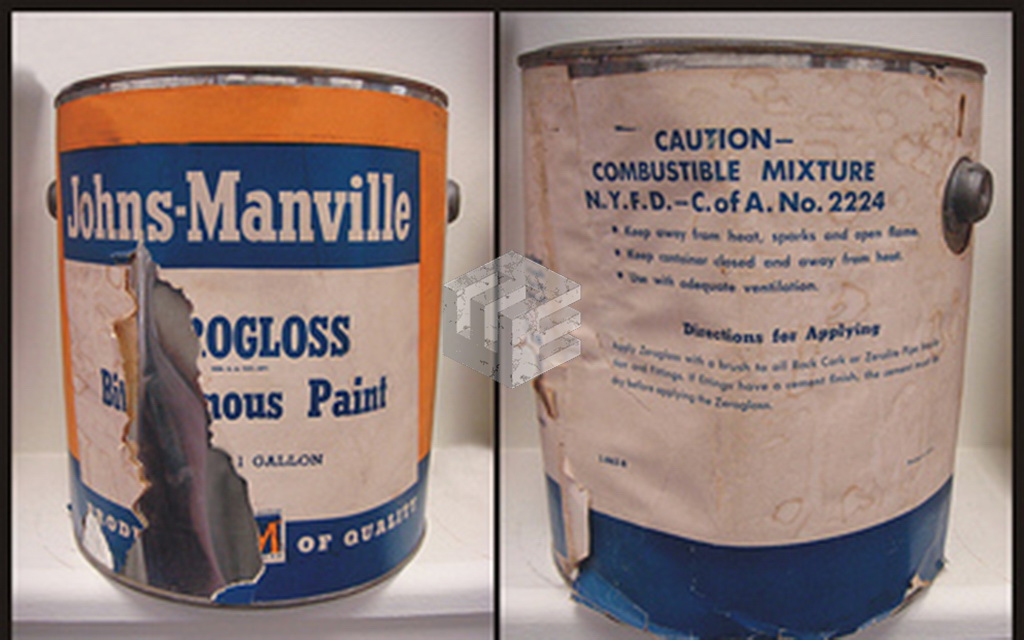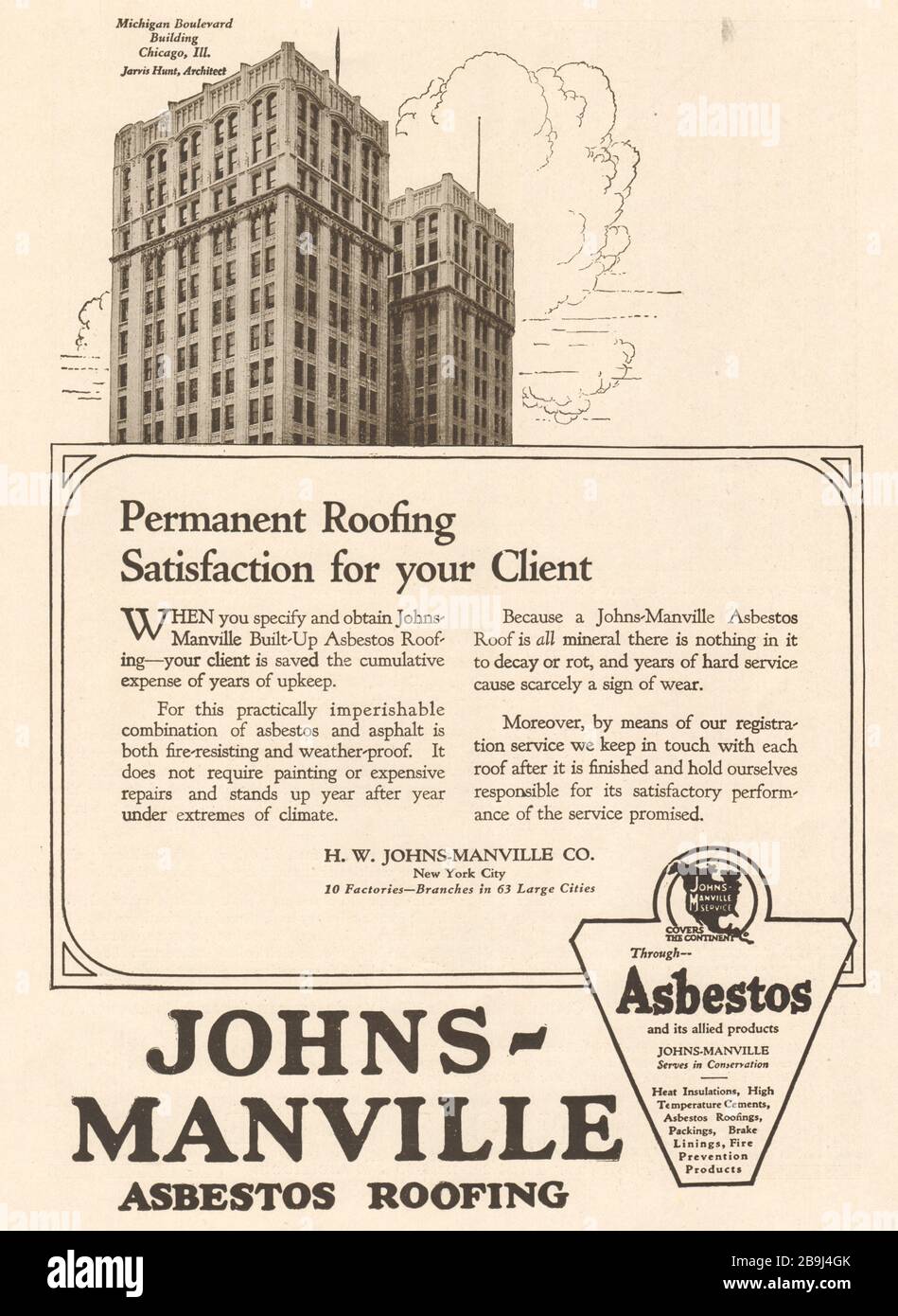Are you or a loved one grappling with an asbestos-related illness, unsure of where to turn for support and compensation? The Johns Manville legacy, a story etched in the annals of industrial history, reveals a complex narrative of innovation, exposure, and enduring legal battles that continue to shape the lives of countless individuals today.
The echoes of Johns Manville's actions reverberate through time, reminding us of the importance of corporate responsibility and the long-term consequences of prioritizing profit over public health. The company, once a titan of industry, now stands as a stark example of the devastating impact of asbestos exposure, leaving behind a trail of suffering that continues to unfold.
For individuals impacted by asbestos exposure, navigating the legal landscape and securing rightful compensation can be a daunting task. The Manville Trust, established to address the claims of those harmed by Johns Manville's products, stands as a beacon of hope, offering a pathway toward financial relief and acknowledgement. This comprehensive guide delves into the heart of the matter, providing critical information, resources, and insights into the claims process, legal options, and historical context surrounding Johns Manville.
- Whoopi Goldbergs Net Worth How Much Is She Worth
- Cc Deville Net Worth 2024 How Rich Is The Poison Guitarist
The story of Johns Manville begins in 1858, when Henry Ward Johns, a visionary entrepreneur, embarked on a journey to revolutionize the roofing industry. From the humble beginnings of manufacturing roofing shingles in his New York City basement, Johns laid the foundation for what would become one of the largest asbestos manufacturers in the world. However, the narrative takes a darker turn as the company's relentless pursuit of profit overshadowed the safety of its workers and consumers.
The use of asbestos, a naturally occurring mineral prized for its heat resistance and insulating properties, became central to Johns Manville's product line. From construction materials to insulation for naval vessels, asbestos found its way into a vast array of products, unknowingly exposing countless individuals to its deadly fibers. The company's brand, "Transite," introduced in 1929, became synonymous with asbestos boards and pipes, further solidifying its presence in the industry.
Under the leadership of the Manville family, the company experienced significant growth, expanding its product line to include sheet packaging for cylinders, brake linings, asbestos cement, and acoustical products. Manville soon became a selling agent for products made by Johns' company, solidifying the intertwined destinies of these two entities.
- Mark Hamills Net Worth How Much Does Luke Skywalker Have
- Karl Rove Net Worth Wealth Unveiling The Details
The consequences of asbestos exposure, however, began to emerge, casting a long shadow over Johns Manville's success. The insidious nature of asbestos-related illnesses, such as mesothelioma and asbestosis, became increasingly apparent. In many cases, the cancer will be latent for 20 to 30 years after exposure, making it difficult to pinpoint the source of the illness. Despite growing scientific evidence linking asbestos to cancer, Johns Manville continued to use the mineral in its products, prioritizing profits over the well-being of its employees and the public.
The lawsuits began to mount, exposing the company's knowledge of the dangers of asbestos and its deliberate concealment of this information. By 1976, the effects of these lawsuits were having a dramatic impact on the industry, forcing Johns Manville to confront the consequences of its actions. The company, facing overwhelming legal liabilities, was forced to file for Chapter 11 bankruptcy protection in 1982.
The Manville Trust was established as part of the bankruptcy proceedings to provide compensation to those who had been harmed by Johns Manville's asbestos products. Over the past three decades, the trust has paid out hundreds of millions of dollars in claims, offering a lifeline to asbestos victims and their families. The trust continues to actively pay settlement claims today.
Navigating the complexities of the Manville Trust can be a challenging endeavor, but it is essential to understand the process for those seeking compensation. The first step involves gathering relevant information, including medical records, employment history, and documentation of exposure to Johns Manville's products. Asbestos victims provide information about their diagnosis and the Johns Manville asbestos products they were exposed to. This information is crucial in establishing a connection between the claimant's illness and the company's products.
Claimants must then file a claim with the Manville Trust, following the specific procedures and deadlines outlined by the trust. The claim must include detailed information about the claimant's exposure to asbestos, their medical condition, and the products to which they were exposed. The trust reviews the claim, assesses its validity, and determines the appropriate compensation.
Claim types, payments and legal options are also important considerations in the process of seeking compensation. In addition to filing a claim with the Manville Trust, asbestos victims may also have legal options, such as filing a lawsuit against Johns Manville or other responsible parties. Consulting with an experienced attorney is crucial in understanding these options and pursuing the best course of action.
The story of Johns Manville is a testament to the enduring consequences of corporate negligence and the importance of prioritizing public health. Asbestos victims and their families continue to face the devastating impact of this industrial tragedy, but the Manville Trust offers a ray of hope, providing a pathway toward financial relief and acknowledgement.
The Manville Trust's ongoing commitment to compensating asbestos victims demonstrates the importance of accountability and the enduring need for justice. It's a complex situation, involving legal battles, financial settlements, and a deep responsibility to the victims.
The 1939 World's Fair in New York showcased the company's ambitions, with the "Asbestos Man" greeting visitors at the "Home of Asbestos" building/exhibit. Johns Manville was a leading producer of asbestos products for construction, mining, and naval industries. The company's history of asbestos use, exposure, and the compensation for mesothelioma victims highlights the long-term consequences of corporate decisions.
The use of asbestos in cement pipes, documented in various corporations, further underscores the widespread impact of asbestos exposure. The companies that used asbestos in their cement pipes include, but are not limited to, Johns Manville. Insulate America named JM supplier of the year for the fifth time in six years.
In particular, this blog will focus on the snippet from 1898 to 1933, which constitutes the first six pages of the chronology.
For those seeking to understand their legal rights and potential for compensation, knowing how to file a claim for compensation from the asbestos trust fund of the company is essential. Johns Manville is one company that openly used asbestos for years.
This comprehensive guide serves as an invaluable resource for asbestos victims and their families. From understanding the history of Johns Manville to navigating the claims process, it provides critical information and guidance. By providing resources and support, this guide aims to empower individuals to seek the justice and compensation they deserve.
JM implements environmental management systems in all North American and Europe plants.
This is where you can find out how to file a claim with the trust and learn about your rights and options. This website offers detailed information on filing a claim.
Johns Manville, the largest asbestos manufacturer in the world, hid the dangers of asbestos exposure and faced thousands of lawsuits.
To understand the full scope of the issue, it's important to know about the asbestos products manufactured and used by Johns Manville.
In this complex web of history, law, and medicine, seeking legal advice from experienced attorneys can be invaluable.
This is a reminder that the legacy of Johns Manville is a story of tragedy and resilience. The quest for justice continues, and the Manville Trust remains a vital resource for asbestos victims.
The following is a table with information regarding Johns Manville:
| Aspect | Details |
|---|---|
| Company Name | Johns Manville |
| Industry | Asbestos Manufacturing, Construction, Mining, Naval |
| Founded | 1858 (as Henry Ward Johns Manufacturing Roofing Shingles) |
| Key Products | Asbestos products for construction, insulation, roofing, and industrial applications (e.g., Transite boards and pipes, brake linings, etc.) |
| Headquarters | Denver, Colorado (current) |
| Bankruptcy | Filed for Chapter 11 bankruptcy in 1982 due to asbestos-related lawsuits. |
| Manville Trust | Established as part of the bankruptcy proceedings to compensate asbestos victims. |
| Legal Issues | Faced thousands of lawsuits related to asbestos exposure, concealment of health risks, and negligence. |
| Environmental Impact | Extensive use of asbestos led to widespread exposure, causing significant health problems like mesothelioma and asbestosis. |
| Notable Dates | 1858: Founding, 1929: Introduction of Transite, 1982: Bankruptcy filing. |
| Current Status | Still operating, with operations focused on building and specialty products. The Manville Trust continues to process claims. |
| Environmental Management | JM implements environmental management systems in all North American and Europe plants. |
| Awards | Insulate America names JM supplier of the year for the fifth time in six years. |
| History | Johns Manville was a leading producer of asbestos products for construction, mining, and naval industries. |
| Legacy | The company's legacy is marked by the significant harm caused by its asbestos products and the resulting legal battles and compensation claims. |
For further information, you may find additional insights at the following resource: Johns Manville Official Website



Detail Author:
- Name : Delores Ziemann
- Username : weldon.green
- Email : zula43@leuschke.com
- Birthdate : 1989-02-11
- Address : 32742 Langworth Hills Port Beth, UT 73978-8059
- Phone : +1.205.720.2007
- Company : Cartwright, Konopelski and Swaniawski
- Job : Food Servers
- Bio : Quos praesentium quae temporibus rerum illum magni cum. Nihil optio eaque consequatur ducimus. Consequatur non iure voluptatum sit voluptatem eum deleniti.
Socials
facebook:
- url : https://facebook.com/granti
- username : granti
- bio : Vel eos numquam unde voluptatum dolorum sed. Vel et et dolores sit.
- followers : 1613
- following : 1177
instagram:
- url : https://instagram.com/isidrogrant
- username : isidrogrant
- bio : Aliquid vitae dolorem culpa est eos est et corrupti. Doloremque minima omnis dolor error rerum.
- followers : 104
- following : 1545
tiktok:
- url : https://tiktok.com/@isidro_official
- username : isidro_official
- bio : Aliquam nostrum omnis sit repellendus deserunt et qui.
- followers : 3145
- following : 878
twitter:
- url : https://twitter.com/isidro1536
- username : isidro1536
- bio : Fugit velit tenetur quae. Accusamus at reprehenderit odit. Laborum voluptas placeat sit dignissimos modi consectetur amet.
- followers : 4723
- following : 449
linkedin:
- url : https://linkedin.com/in/grant1989
- username : grant1989
- bio : Tenetur asperiores consectetur nihil.
- followers : 1455
- following : 1407